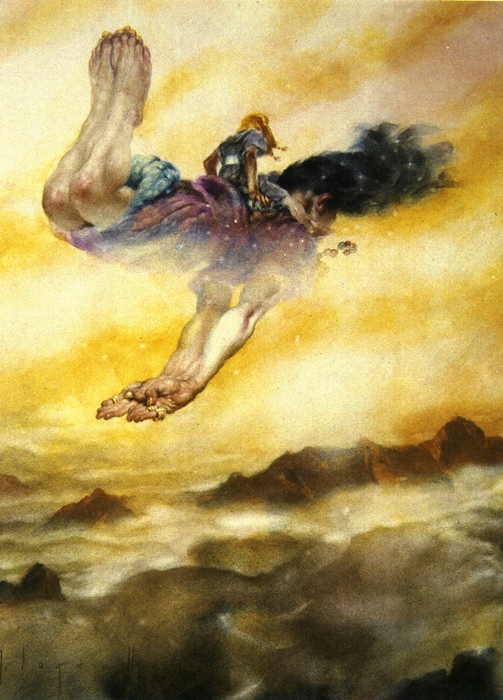This is a continuation and expansion of the “Victorian
Fantasy Painting” album that I have been posting on Facebook. Along with new posts here, I plan to meld
over the images and insights from that gallery so that all the images can be
found and appreciated in one location.
My primary goal in creating these posts is to
re-introduce many forgotten fantasy paintings and artists to modern day followers
of that genre, whether practicing artists themselves or fans of fantasy art. The great defect with most art history books
is that they continually reprint the same “Important” paintings over and over
again while ignoring the wider world of the entire movement. As a result, most contemporary artists have a
very limited view of the thought processes practiced back then in the act of
creativity. The world of fantasy art
today is bound by unnecessary habits and restrictions that leave the genre all
the poorer.
 |
| "The Cloud" by Arthur Hacker |
The nude form has long been a staple of almost all
art. In fantasy art it has a rich place
because of the various conceptual uses it can be applied to. My favorite is “Allegory” in which the human
form is used to symbolize an abstract concept or condition, or an aspect of
nature. Arthur Hacker uses it beautifully
in “The Cloud”. The human form enhances
the connection of the viewer and therefore the emotional communication.
 |
| Hermann Behrens depicts a woman whose vanity (the mirror symbol) is associated with Death. |
Another use of the nude is to serve as an anchor for a
philosophical statement about such concepts as the danger of the female of the
species. Symbolist art of this period is
rife with allusions to death and decadence in relation to the “Femme Fatale”
 |
| "Lilith" by John Collier |
Finally the nude was popular in depicting specific characters
from mythology. In fact this genre was
popular because it provided an excuse (for those who needed one) to paint a
beautiful nude.






































